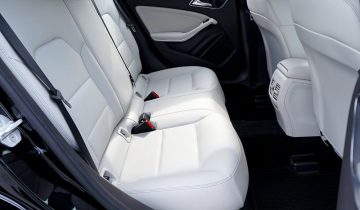Seat belt pretensioners and airbags prevent further injury and potentially save lives. However, it is still possible to suffer from physical harm and poisoning when mishandled before installation. Here’s the best guide on preventing these from happening now and in the future.
Register Them
If you have any items classified as UN Class 1 (explosives) that you want to keep in your laboratory, you must register for a Mode B Registered Laboratory with the Environmental Health Department. The departments that usually handle chemical and environmental safety issues are as follows:
- fire department
- trading standards
- environmental health department
Register your devices no matter what, as fitting them to the vehicle may take longer than expected, which may mean you need to keep them on the premises overnight. These precautions prevent seat belt repairs, and airbag module resets from customers in the future.
Storing Them
Your storage devices must also meet the Mode B registration requirements to keep them safe properly. These containers must be quickly closed and locked, easy to clean, and contain no exposed steel that can puncture or damage the safety devices.
Though your storage container does meet the requirements, you must also protect it from other substances that could negatively affect the devices’ performance. As such, keep them away from oils, paints, and other flammable solutions; high-temperature areas such as welding or brazing rooms; as well as electrical enclosures, cables, sockets, and other items that can spark combustion.
The cabinet or container should also be firmly secured to a wall or floor to prevent the devices from falling out and coming into contact with the materials mentioned above. It must also be maintained at room temperature to prevent leakage, damage, and malfunctions that would otherwise signal seat belt repairs and airbag module resets even in a brand-new vehicle.
Handling Them
Remember these guidelines when the time comes for you to install or repair them:
- Disposal of deployed airbags and pretensioners should be left to your supplier as they know precisely how to get rid of these best.
- Only properly trained technicians should deploy your airbag.
- Return defective airbags in the replacement packaging provided by your supplier. If they don’t have the packaging, ask them to provide it for you.
- Always carry the airbag module with the trim cover facing away from you. If you carry it upside-down, the cover could cover your face and interfere with breathing, or worse: it could prevent it from inflating.
- Always refer to the manufacturer’s or supplier’s information before working on them with any vehicle, especially airbags, as their processes vary depending on their design.
- Airbags are designed to fire upward; don’t place the module or wheel assembly face first (trim-side first) on the floor.
- Never put your head or torso near the airbag when installing it in an automobile. This is to protect you from accidental deployment.
- When testing an airbag, it must first be mounted securely on a bench or particular structure to keep it from triggering while it is being examined.
- Never repair or adjust airbag modules by yourself.
- Always use new components. Return any damaged modules to your supplier, except if damaged due to spilled contents.
- Do not expose airbag modules to excessive heat (over 90 degrees Celsius or 194 degrees Fahrenheit), impact, electrical current (including static electricity), or radio transmitters.
One Last Reminder
Drivers’ lives are on the line when dealing with seatbelts and airbags. If you remember anything from this article, let it be this: always consult with the device manufacturer for the best handling, installing, and disposing procedures. It is always better to hear it straight from the makers than second-guess and cause casualties that could have been prevented.
Schedule an appointment with Safety Restore today if you need seat belt repairs or airbag module resets that follow this handy guide to the letter! We are the world’s leader in post-accident restorations and provide webbing replacements and instrument cluster repairs. Contact us right now!

